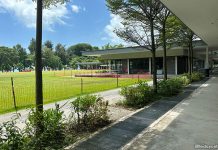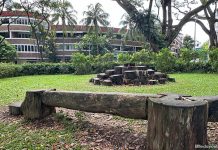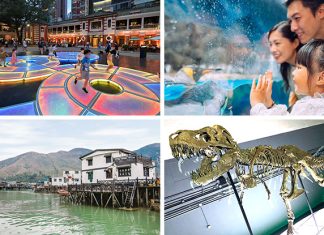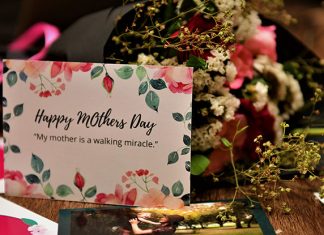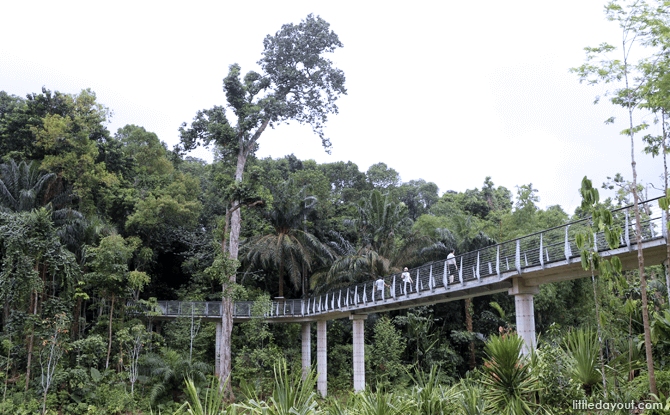
From the waters of the wetlands to the heights of the trees – these are some of the experiences that await visitors at Singapore Botanic Gardens’ Learning Forest.
The 10-hectare Learning Forest is the result of work to restore part of the forest to the lowland forest and wetland habitats that once surrounded Singapore Botanic Gardens. It forms part of the Garden’s Tyersall-Gallop Core and has been carefully designed to integrate with the Gardens’ existing rainforest.
The result of the integration is a unique experience within Singapore Botanic Gardens.
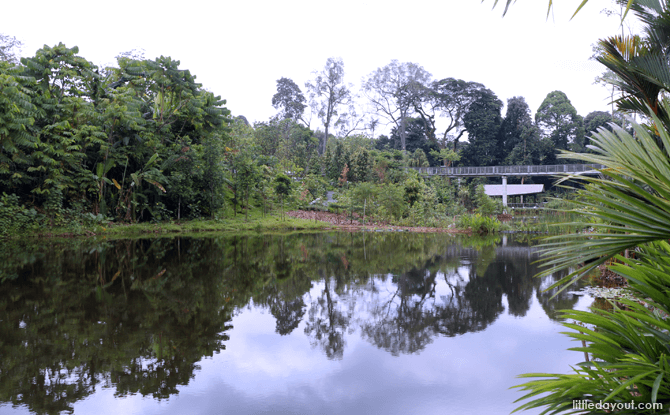
Compared to the rest of the Gardens, the Learning Forest has a more natural, less manicured vibe. Visitors will be able to hear the sounds of the forest around them as they explore the Learning Forest.
According to NParks, the Learning Forest is home to more than 100 species of birds, 20 species of amphibians and reptiles, seven species of mammals and over 500 species of plants.
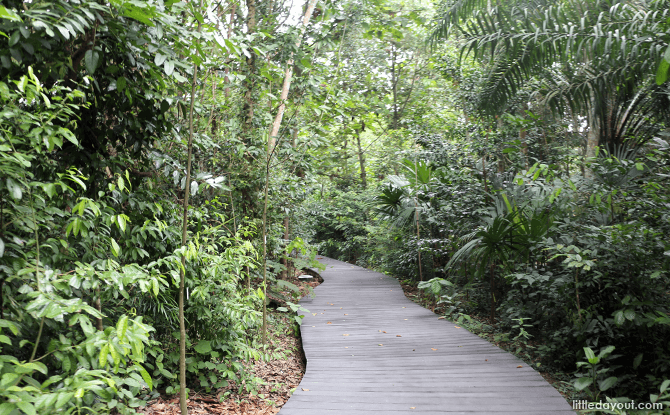
To protect this ecosystem, Learning Forest has a network of boardwalks and elevated walkways to keep visitors off the parkland.
The two highlights at the Learning Forest are the Keppel Discovery Wetlands and the SPH Walk of Giants.
Keppel Discovery Wetlands
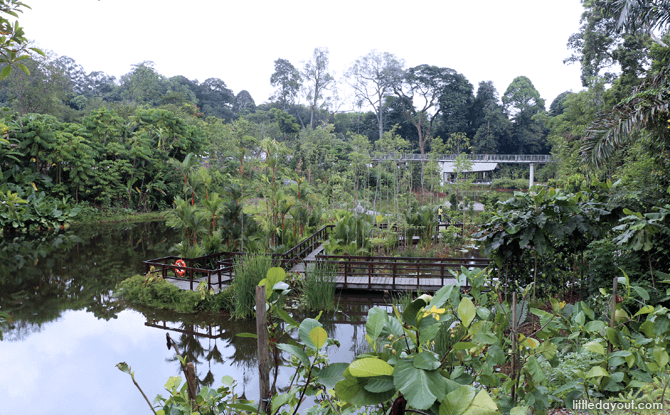
The Keppel Discovery Wetlands is Singapore’s most accessible, freshwater forest wetland.
Taking reference from maps dating back to the early 19th century, the Keppel Discovery Wetlands replicates the wetlands that once surrounded the now Singapore Botanic Gardens.
Thankfully, unlike the wetlands of the past, the Keppel Discovery Wetlands has convenient boardwalks. This means there is no need to slosh through the water to appreciate the flora and fauna of the wetlands.
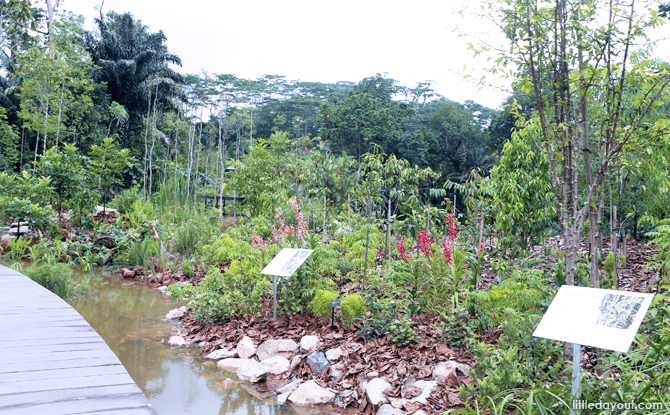
Its 50-metre long Botanists’ Boardwalk pays tribute to the Gardens’ early botanists. Along the boardwalk, visitors can learn about discoveries made by Henry Ridley (“Mad Ridley”).
His research into rubber helped spark off the worldwide rubber boom. Another botanist remembered here is EJH Corner whose work pioneered the study of the forest canopy.
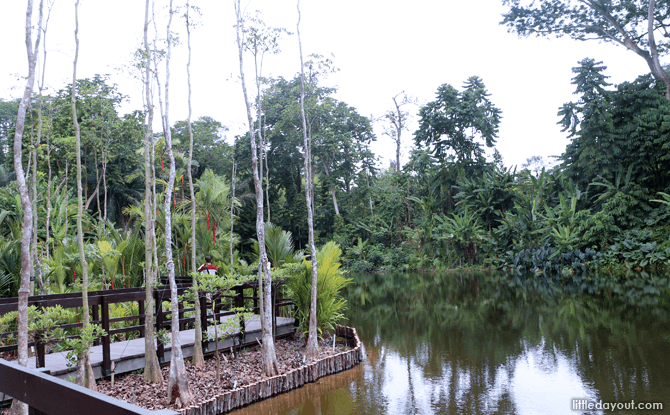
The Pulai Marsh area is home to Marsh Pulai, a tree with buttresses that grows in flooded ground.
From the boardwalk, keep a lookout for animals such as the Black Marsh Terrapin and Red-legged Crake.
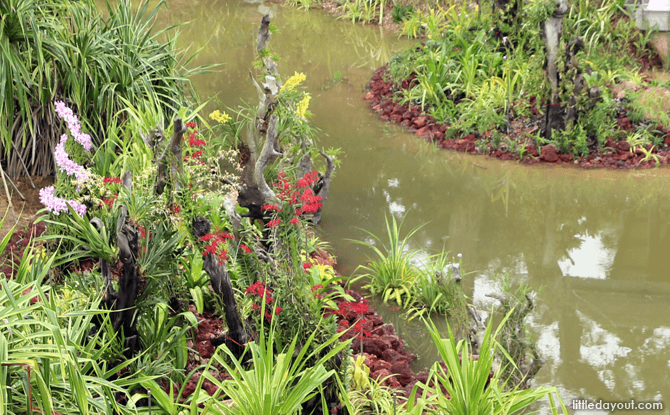
The Keppel Discovery Wetlands’ Orchid Island showcases orchids native to Singapore and displays them in their natural habitat.
SPH Walk of Giants
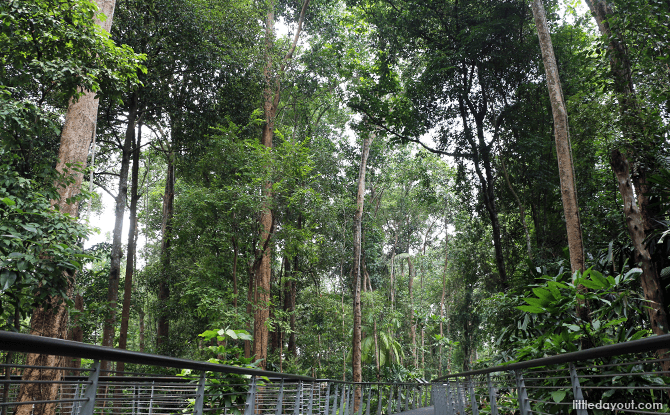
Apart from the Keppel Discovery Wetlands, the other major section of the Learning Forest is the SPH Walk of Giants.
This 260-metre long elevated boardwalk takes visitors up to a height of eight metres above the ground under towering trees that can grow up to 60 metres in height.
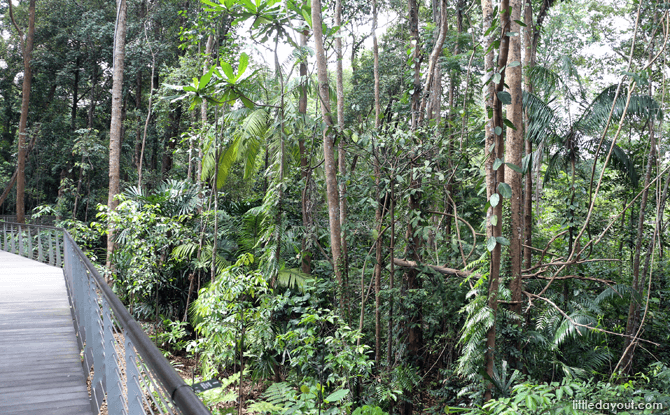
The SPH Walk of Giants’ boardwalk provides visitors with a good view of the forest mid-forest level which they otherwise would not be able to see.
They can also peer up to the canopy above and observe the natural phenomenon known as crown shyness. This is when the tops of individual trees do not come into contact with each other.
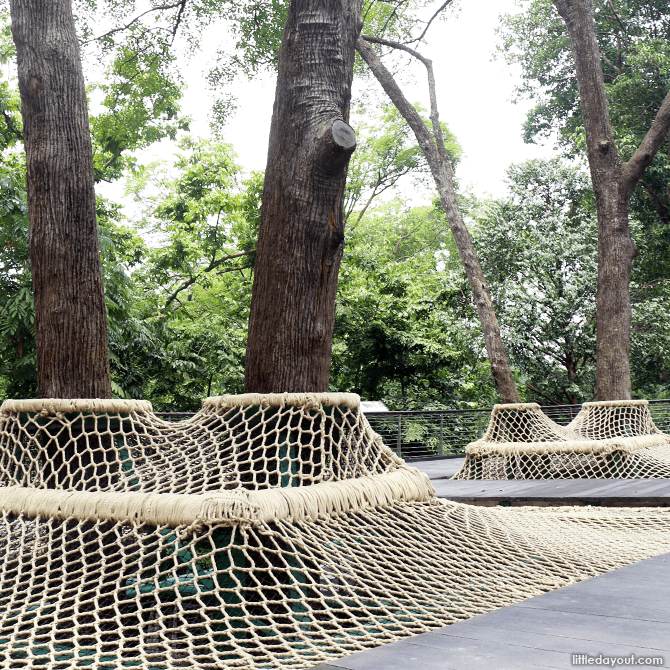
This is also where visitors will find the Canopy Web.
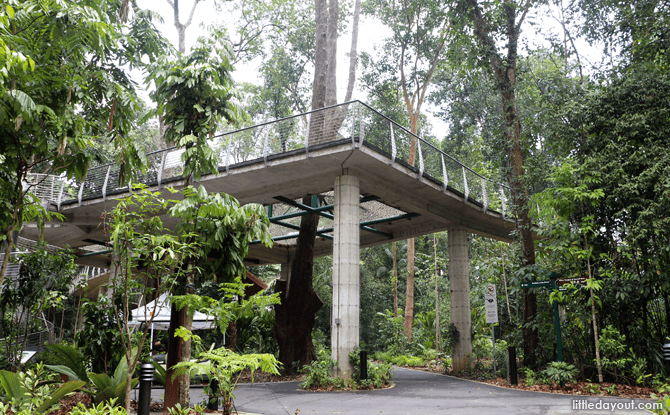
Canopy Web features cargo nets that run out to tree trunks from a platform. Visitors who dare can to climb out along the nets and cosy up with the trees.
Learn More About the Forest
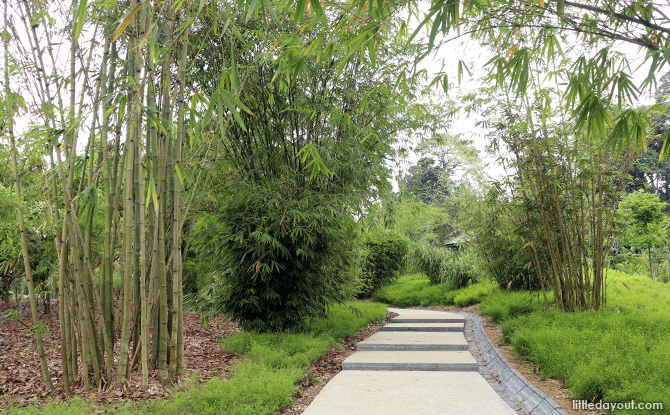
Also at the Learning Forest is an area dedicated to bamboo (known as a bambusetum) with over 30 species, a collection of wild fruit trees and durian trees.
Singapore Botanic Gardens’ Learning Forest was officially opened to the public by Prime Minister Lee Hsien Loong on 31 March 2017.
In 2018, a new 8-hectare Gallop extension will be opened to the public next to the Learning Forest. The Gallop extension will feature a Forest Conservation Interpretive Centre and Natural History Art Gallery.
Getting to the Learning Forest
The Learning Forest stretches out along Tyersall Road and is closer towards Holland Road. The Keppel Discovery Wetlands is located in the northern section of the Learning Forest, close to National Orchid Garden. The SPH Walk of Giants is located at the southern end of the Learning Forest, close to Swan Lake.
To get the Learning Forest by train, the closest MRT station is Botanic Gardens MRT Station (Circle Line). From there, it is a 20-minute walk to Learning Forest.
By bus, take bus number 7, 105, 123, 174,174e; SMRT 75, 77, 106 or NR8 and alight at Holland Road (Tanglin Gate) and take a 10-minute walk to Learning Forest.
For those who are driving, parking is available through the Tyersall Gate with entry through Tyersall Road, or at the Botany Centre from which it is a ten-minute walk to Learning Forest.
Learning Forest, Singapore Botanic Garden
Opening Hours: 5 am to midnight daily. The Keppel Discovery Wetland and SPH Walk of Giants are closed from 7 am to 7 pm.
Admission: Free
Website








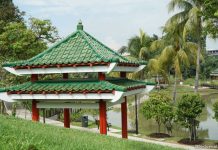
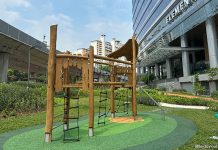
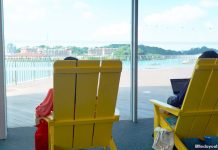
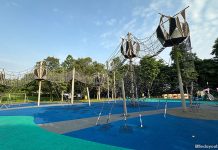
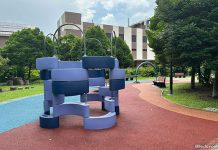
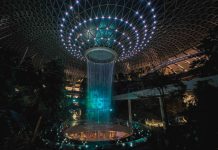
![Pasir Ris Town Park: Fishing Pond In The Middle Of Town [2024] Pasir Ris Town Park: Fishing Pond In The Middle Of Town](https://www.littledayout.com/wp-content/uploads/pasir-ris-town-park-04-218x150.jpg)
